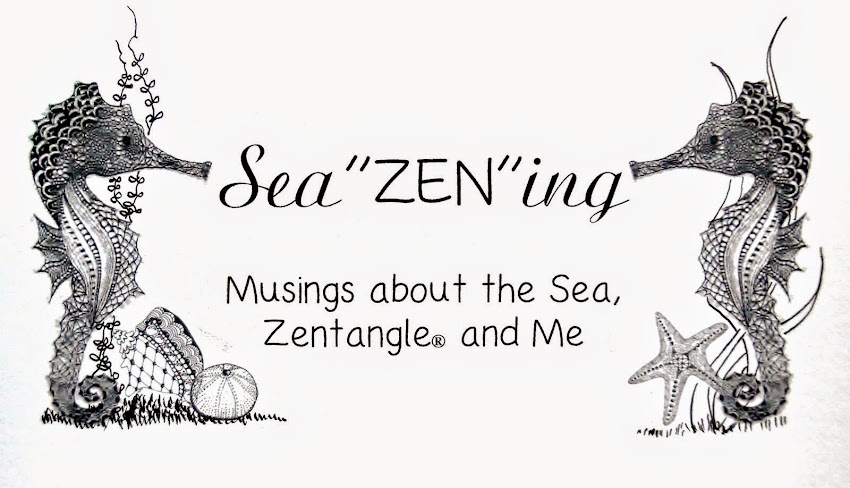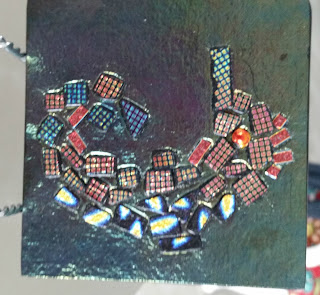The first piece I completed was on a 6x6 tile of clear glass. I formed a fish using several colors of transparent glass in blues and greens. I cut odd shaped random sized pieces from each color. Then I filled in around the fish with clear glass cut the same way. Newy Fagan helped out by filling in some of the larger gaps with smaller clear glass pieces (which enhanced the overall look). The tile was then fired to a tac* fuse (the glass adheres but doesn't become fully fused leaving texture).
Then, using a mixture of CMC (a cellulose fiber used as a binder in foods like taco shells) and glass powder (black in this case), the glass pieces were grouted. The tile was then fired again using a tac* fuse to leave the texture and here are the results.
I wish I had used a different color for the face than dark blue, but I didn't know what it was going to come out looking like!
I really got into this method of creating. So much so that I used it again twice! during the workshop.
Here is a second piece. This tile was also created on clear glass. I used a turquoise powder for the grout. Then I fused the whole piece onto white glass to give the design more contrast.
This tile was fired on a full fuse, therefore, the glass is flat.
I like the blue powder, but think a darker blue would give the piece more contrast.
* Newy has her own firing schedules, so technically, I don't know that she calls the schedule we used as a "tac" fuse. But for the beginner mind, like myself, I am using terms that can more easily be conveyed. The terms I use are "slump, tac, contour, and full" when talking about firing schedules.

















